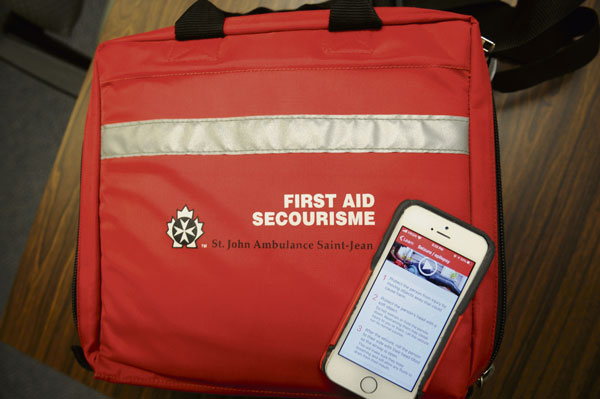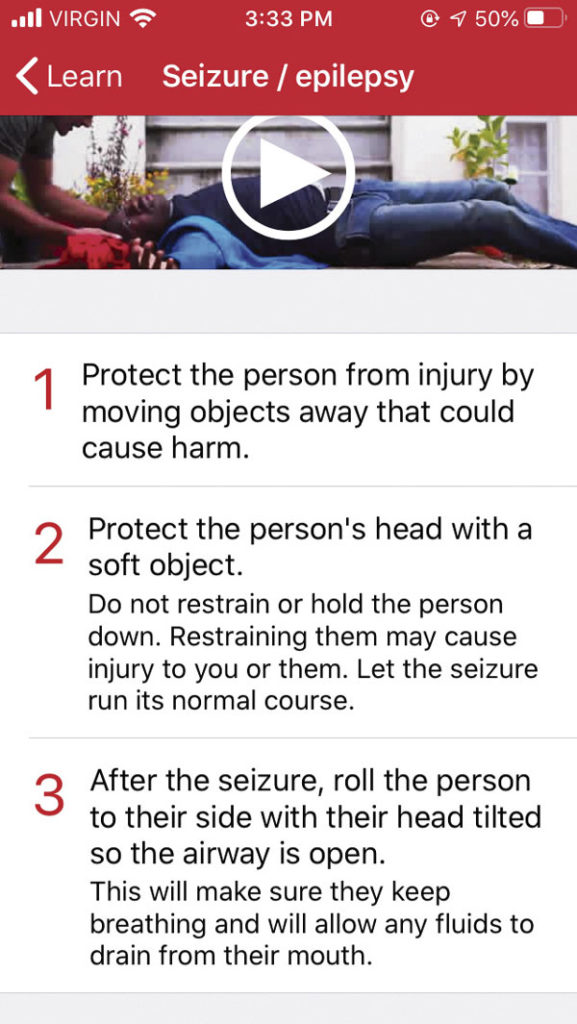
Unidentified woman used first aid training and phone app to help out a man in distress
The work of a Prince Albert bystander is being heralded by the Canadian Red Cross after the woman used her first aid training, along with a mobile application, to help a person in distress before paramedics’ arrival last fall.
The story was recently highlighted in a Red Cross blog post published Thursday by the organization.
According to the blog post, Parkland Ambulance paramedic Lyle Karasiuk was the first on scene for a call of a person lying on the street. Karasiuk told the Herald that when he arrived ahead of the ambulance to the 13th street location downtown, he found three people — a man lying on the ground, one woman standing and talking on her phone with emergency medical dispatchers and a third woman crouching beside the man and scrolling on her phone.
“He was having a seizure,” Karasiuk said.
“Some bystanders were kind enough to stop and render some first aid. I noticed that this lady had her phone on the ground and said out loud to herself, ‘turn him on his side.’”
She rolled him on his side because he was unconscious but breathing, Karasiuk said.
“She said ‘I took a first aid class and they showed us how to use the Red Cross First Aid app.’”
The app had told her to roll the man onto his side after his seizure to keep his airway open should he vomit.
Karasiuk said the story is an illustration of “how valuable the public can be and how important the public is, when the scene is safe, to stop and render first aid.”

While paramedics generally respond fairly quickly, having a person on the scene performing first aid, if it’s safe, can make a huge difference, he said.
“So long as it is safe and they feel comfortable helping someone, by all means — do so,” he said.
“It will make a world of difference. In this case, let’s say this man wasn’t breathing — she would have been the first on scene to perform CPR. Say this person started to vomit — she would have been right there to roll him onto his side so his airway would stay open and stay clear.”
The Canadian Red Cross developed the app the woman was using when Karasiuk arrived. It said providing that information and confidence to first aiders is a key reason it was developed in the first place.
“It was developed to help boost the confidence of people giving first aid while using the skills that they learned in a first aid course,” explained Andrea Wilkie, the Red Cross first aid program representative for Saskatchewan.
“We have found that a lot of people will take first aid courses, but then they’re a little hesitant or not quite confident in their skills to actually give first aid. The app has the information right at your fingertips — definitely accessible. You can use it during but also before and after an emergency situation.”
The app also includes step by step instructions for a variety of types of incidents, including indicating when you should call 911. Karasiuk said it’s useful as another tool in case of an accident or emergency.
“Our medical communication specialists that work in our system will start to ask you questions (and walk people through care), but things like the first aid app can be useful for someone at home, for example,” Karasiuk said.
He compared it to another tool, the 811 Saskatchewan health information helpline, available 24/7.
Wilkie said the app serves as a functional first aid manual, just like the old paper one you would receive after completing a first aid course. First aid instructors are encouraged, she said, to tell people about the app, which was first developed in 2013.
Karasiuk praised another feature of the app. In addition to the step-by-step instructions for first aid, it includes tips about emergency preparedness and details on how to both call for help and key phrases, such as “I need an ambulance”, in foreign countries and languages.
He was pleased that someone took the time to use what they had learned in the classroom out on the streets.
“It was an amazing response to know that this woman who had ultimately taken first aid from us was able to use a tool the instructor had to make a difference caring for someone. That’s really gratifying for us as paramedics to know that every day first aid tools are not just for use at home or in the workplace,” he said.
“They’re for any time you’re out in the community because you never know when an emergency might happen. You can be at a raider game, you can be walking down the street. she was there and able to render some aid and make a world of difference for this one person.”
Wilkie was similarly pleased when she learned of the Prince Albert woman who used the app to help someone in need.
“It was really wonderful to see that somebody took that away and actually put that into practice.”
As the man recovered from his seizure, the ambulance arrived. Karasiuk turned to update the crew on the situation. When he turned back to learn more about the bystander, she was gone.
“I never learned her name or who she was,” he told the Red Cross. “But I’m so glad she could be there to help this man.”
The Red Cross first aid app is available for free on the Apple App and Google Play stores and is compatible with Apple and Android devices.

